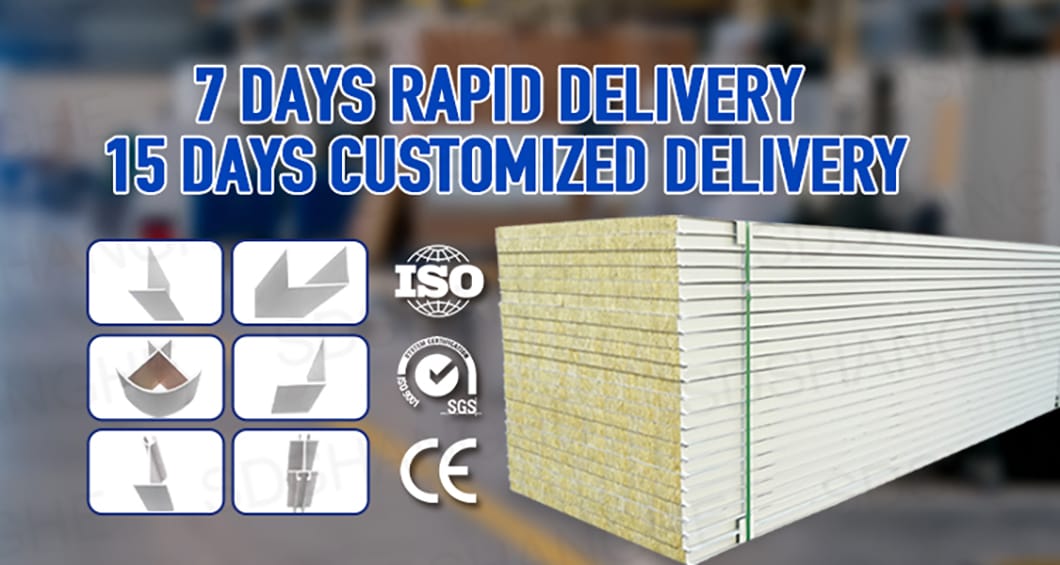Introduction
In the quest for energy-efficient buildings and visually appealing exteriors, sandwich boards have emerged as a game-changing solution in the realm of construction and renovation. Combining aesthetics with functionality, these composite panels are revolutionizing the process of exterior wall refurbishment by offering superior insulation properties alongside decorative finishes. This article, tailored to align with Google’s search engine indexing preferences, delves into how sandwich boards facilitate both thermal insulation and aesthetic enhancement, making them a preferred choice for modern facade renovations.
Section 1: Understanding Sandwich Boards – The Insulation and Aesthetics Dynamo
Sandwich boards, also known as sandwich panels, are composite structures consisting of two outer layers (typically made from metal, fiber cement, or other durable materials) bonded to an inner core of insulation material. This design not only strengthens the panels but also significantly enhances their thermal insulation capabilities.

1.1 Insulation Properties
- Thermal Efficiency: The core, usually filled with materials like polyurethane foam or mineral wool, creates a barrier against heat transfer, reducing energy consumption for heating and cooling.
- Moisture Resistance: Many sandwich boards are designed to prevent moisture infiltration, preventing dampness and mold growth, thereby preserving indoor air quality.
1.2 Decorative Facades
The outer layers of sandwich boards can be pre-finished with a variety of textures and colors, allowing for customization that complements any architectural style or design preference. This feature transforms mundane exteriors into visually striking facades without sacrificing performance.
Section 2: The Renovation Revolution: Why Sandwich Boards?
2.1 Overcoming Traditional Challenges
Traditional facade renovation methods often involve extensive labor, high costs, and lengthy downtime. Sandwich boards streamline the process by offering:
- Speedy Installation: Prefabricated panels can be quickly installed over existing walls, significantly reducing renovation time and minimizing disruption.
- Cost-Effectiveness: Long-term energy savings and reduced maintenance requirements offset the upfront costs, making sandwich boards a cost-efficient option in the long run.
2.2 Environmental Benefits
The use of sandwich boards in facade renovation contributes to sustainable building practices:
- Reduced Carbon Footprint: Enhanced insulation leads to decreased energy consumption and thus lowers greenhouse gas emissions.
- Recyclability: Many sandwich board components can be recycled at the end of their lifespan, supporting a circular economy.
Section 3: Case Studies and Creative Applications
3.1 Historical Building Restoration
In urban renewal projects, sandwich boards are being used to insulate and rejuvenate historical buildings without compromising their architectural heritage. The panels can be customized to mimic original materials, preserving aesthetics while introducing modern energy-saving features.
3.2 Modern Architectural Marvels
Contemporary buildings take advantage of sandwich boards’ versatility, creating dynamic facades with intricate patterns, vibrant colors, and even integrating photovoltaic cells to generate renewable energy.
Section 4: Best Practices and Considerations for Implementation
To maximize the benefits of sandwich boards in facade renovation, several factors should be considered:
- Site Assessment: Prior to installation, thorough evaluation of the existing structure is crucial to determine the appropriate panel type and installation method.
- Design Integration: Collaboration between architects, engineers, and installers ensures the panels integrate seamlessly with the building’s design and function.
- Regulatory Compliance: Adhering to local building codes and obtaining necessary permits is essential to ensure a successful renovation project.
Section 5: Future Outlook and Innovations
The sandwich board industry continues to evolve, with ongoing research focusing on:
- Advanced Insulation Materials: Development of even more efficient and environmentally friendly core materials.
- Smart Facade Technology: Integration of sensors and responsive coatings that adjust to weather conditions, further optimizing energy efficiency.
Conclusion
Sandwich boards have carved a niche in the realm of exterior renovation and insulation, offering a dual solution that addresses both functional and aesthetic needs. As cities strive for sustainable development and buildings seek to enhance their energy performance, the adoption of sandwich boards in facade renovation projects stands as a testament to innovation in construction technology. By combining thermal insulation excellence with an array of decorative finishes, these versatile panels are transforming urban landscapes, one facade at a time, and are poised to play a pivotal role in shaping the future of sustainable architecture.


